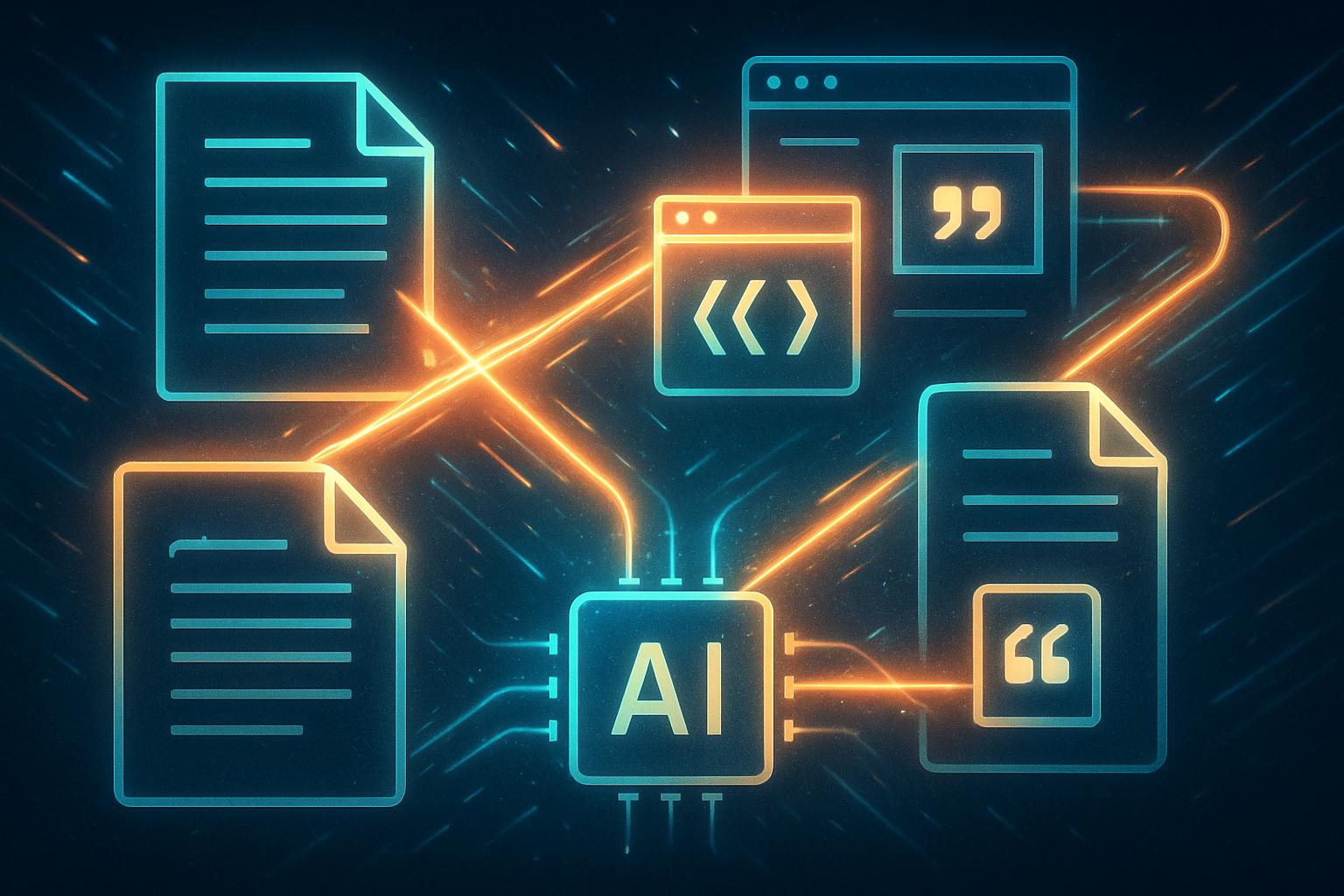
AI CERTS
5 hours ago
Amazon Nova Web Grounding Enables Real-Time Citation Retrieval

Developers can now skip complex retrieval stacks and still show provenance. However, new capability arrives with novel cost and security questions.
This article unpacks technical workings, pricing realities, and competitive context for professional teams. Consequently, you will learn how to position Web Grounding within modern RAG workflows.
Web Grounding Tool Overview
Web Grounding operates as a systemTool called “nova_grounding” inside Amazon Bedrock. When Nova detects missing context, it autonomously runs web searches before finishing the answer.
Retrieved snippets remain within AWS infrastructure, safeguarding enterprise data paths. Moreover, the model returns a citationsContent object that lists each external URL and domain.
The feature supplies real-time citation retrieval without custom indexing or hosting burdens. Therefore, engineers can focus on prompt design rather than pipeline plumbing.
AWS positions the capability as turnkey Retrieval-Augmented Generation for fast production pilots. Industry press echoed the claim, calling it a direct path to RAG accuracy improvement.
Web Grounding embeds current facts and transparent sources into Nova responses. Nevertheless, activation details matter, which the next section explores.
Activation Via Bedrock Integration
Developers enable the tool through the Bedrock Converse API’s toolConfig parameter. Additionally, they add the systemTool name in SDK calls or the AWS CLI.
Proper IAM permissions, especially bedrock:InvokeTool, are mandatory for production workloads. Meanwhile, region limitations apply because GA launched only in three US regions.
Teams should embed Bedrock integration code within their existing orchestration rather than build separate microservices. Consequently, deployment complexity remains low.
Sample Python from the AWS blog shows a single call that triggers real-time citation retrieval when needed.
For multimodal embeddings pipelines, Nova combines vector results with live grounding when search triggers fire.
Correct configuration ensures smooth Bedrock integration and predictable real-time citation retrieval behavior across environments. The following section examines how cost and latency shift once retrieval activates.
Cost And Latency Tradeoffs
Web Grounding incurs charges on top of baseline Nova inference tokens. AWS directs customers to Bedrock pricing, avoiding a flat per-search rate.
Early practitioners measured several extra seconds per grounded query. Moreover, token counts grow because each real-time citation retrieval appended document inflates the payload.
Additional output tokens still count toward quotas, affecting budgets for high-volume chatbots. Consequently, financial planning must model worst-case retrieval frequency.
Teams pursuing RAG accuracy improvement need to balance precision against spend. In contrast, simpler caching strategies may suffice for static domains.
Consider this quick checklist when forecasting cost:
- Average token increase when real-time citation retrieval fires
- Grounding invocation rate per 1000 user prompts
- Added latency measured in milliseconds per invocation
- Current Bedrock integration region pricing differentials
Cost and latency remain manageable with proper monitoring and caching. However, reliability also depends on security and compliance safeguards, discussed next.
Security And Compliance Factors
AWS emphasizes that queries and results stay inside its secured network perimeter. Furthermore, knowledge-graph ranking favors credible domains to reduce misinformation.
Runtime filters attempt to block indirect prompt injection and malicious HTML. Nevertheless, safeguards for non-English content remain less mature.
Enterprises handling regulated data should log citations and inspect them for policy violations. Consequently, legal teams gain clearer audit trails thanks to real-time citation retrieval metadata.
Developers must still validate content because automatic retrieval cannot guarantee source neutrality. In contrast, custom semantic search enhancement over curated corpora can align better with internal policies.
Grounding boosts transparency yet demands continued security diligence. The next section details how accuracy benefits offset these risks.
Accuracy Gains Explained Clearly
Retrieval-Augmented Generation adds external knowledge that outperforms static parameter memories. Moreover, live results update Nova answers with breaking information unavailable during training.
Internal evaluations by AWS cite significant RAG accuracy improvement for factual queries. Meanwhile, practitioners confirm fewer hallucinations when real-time citation retrieval activates.
Multimodal embeddings can enrich context by adding vector hits from documents, images, or audio. Subsequently, Nova merges that context with grounded web snippets for stronger answers.
Semantic search enhancement further ranks retrieved passages for topical relevance. Consequently, citations list higher-authority domains, improving user trust.
Matheus Guimaraes of AWS wrote that Web Grounding offers turnkey RAG accuracy improvement without bespoke infrastructure. Independent tests still call for benchmarks, yet early results appear promising.
Grounded responses clearly enhance precision and credibility. However, market context sheds more light on competitive positioning.
Competitive Market Context Analysis
AWS is not alone in pursuing real-time citation retrieval inside foundation models. OpenAI, Google, and others embed browsing or vector workflows to similar effect.
However, Nova’s design keeps retrieval within the customer’s AWS tenancy, appealing to compliance teams. Google’s Gemini relies on public indexing, which may worry controlled sectors.
OpenAI users often implement multimodal embeddings combined with Pinecone or other stores for semantic search enhancement. Such pipelines demand more engineering compared with Nova’s native Bedrock integration feature.
Consequently, organizations comparing options should weigh staffing costs against automated RAG accuracy improvement. Price transparency and latency metrics will likely influence many purchasing decisions.
Professionals may validate skills through the AI Developer™ certification before piloting these capabilities.
Competition drives rapid feature parity among providers. Therefore, careful evaluation ensures the right retrieval strategy for each use case.
Conclusion And Next Steps
Amazon Nova Web Grounding brings turnkey retrieval and citations to enterprise AI builders. Moreover, the feature intertwines multimodal embeddings, semantic search enhancement, and RAG accuracy improvement for higher trust.
However, adopters must budget for latency, cost, and governance tasks linked to real-time citation retrieval. Careful measurement will reveal whether benefits exceed tradeoffs in each scenario.
To stay competitive, investigate Bedrock integration examples and benchmark performance against existing pipelines. Next, earn the AI Developer™ certification and start building grounded applications today.



